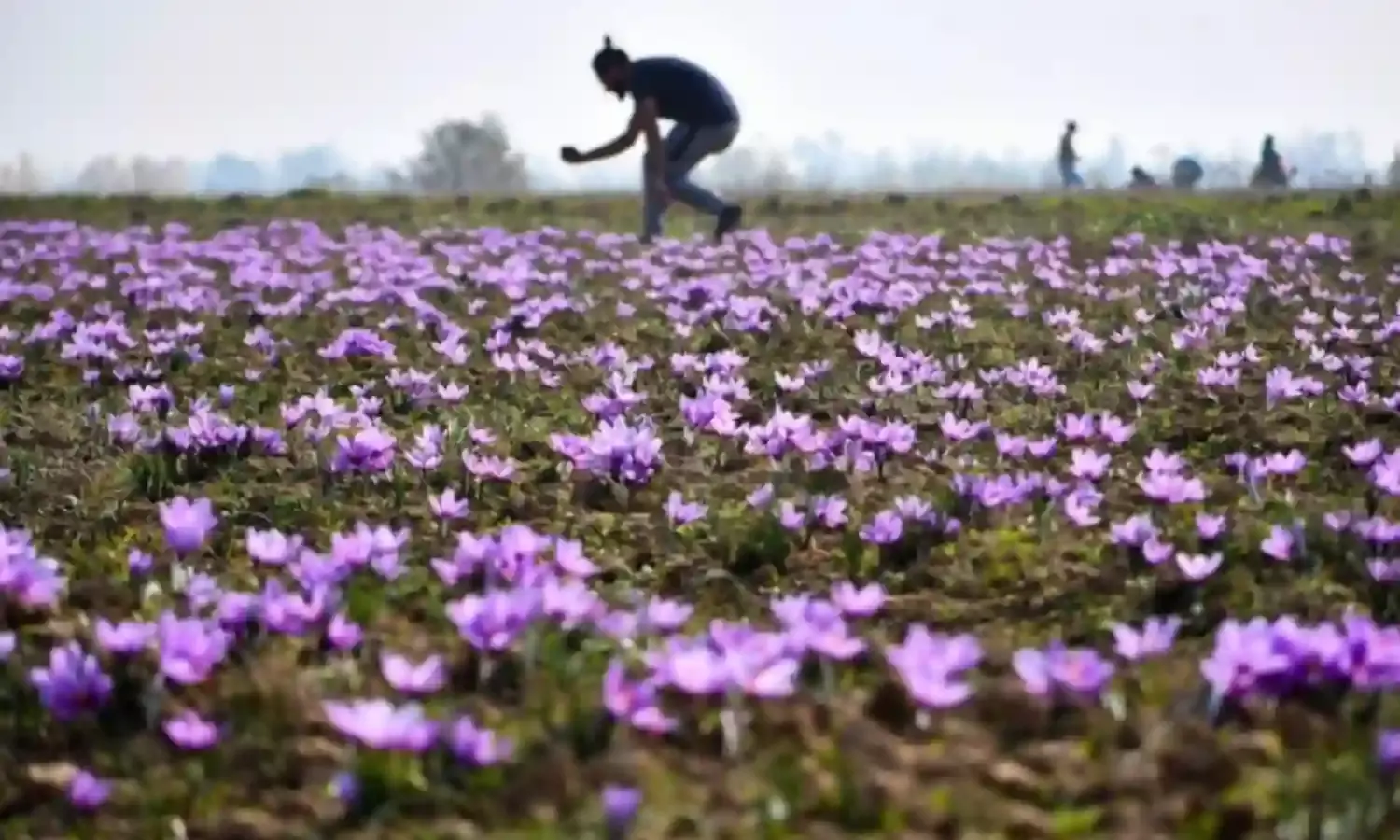
PAMPORE: On the Jammu-Srinagar National Highway near Pampore, purple swathes of centuries-old saffron fields scatter their fragrance on everyone and everything around. It’s late autumn in Kashmir, and villagers around Pampore (also known as the saffron town of Kashmir) are picking the delicate flowers to fill their wicker baskets.

Kashmir saffron (Crocus sativus kashmirianus), known for its flavour and colour, is harvested just once a year, from late October to mid November. Saffron has many uses in food, pharmaceuticals, cosmetics and perfumery, as well as in textile dyes.
Pampore has a table-land (wuder) in and around which the saffron is grown. During the harvest season, men, women as well as children perform the tasks of plucking the saffron crocuses, hand-picking and placing the crop on white cloth, and drying the stigma and stamen. Considered one of the top three regions in the world for cultivating saffron, historians say saffron or zafran has been cultivated in Kashmir since at least 500 BCE.
Saffron harvest season in the Valley is usually like a festival. But over the past two decades, the zeal of growers has sharply dropped due to dwindling production of the crop. Production in J&K has been falling continuously since 2000, and if the trend continues, growers in the districts of Pulwama, Budgam, Srinagar and Kishtwar, where most of the saffron is planted, may lose a crucial source of livelihood.
According to saffron growers and agricultural experts, climate warming, poor irrigation supply, a failed National Saffron Mission, political instability, traditional farming practices, pollution caused by adjoining cement factories, urbanisation, and imports of the cheaper Iranian varieties of saffron pose a threat to the future of this crop.
In Pampore, over 16,000 families depend directly on saffron for their livelihood. The last census recorded that approximately 11,000 women in the Kashmir Valley are associated with saffron farming.
Abid Nabi, 30, grows saffron on 16 kanals (2 acres) in Lethpora town, some 24 km from Srinagar. He also sells Kashmiri saffron globally online. Nabi says that “In 1990, on our 16 kanals of saffron land, the yield was 15 kg, and currently we are able to produce only 4 kg.”
Official figures state that saffron was being cultivated on 5,707 hectares of land at Pampore in 1996, which had shrunk to around 3,500 hectares by 2017.

